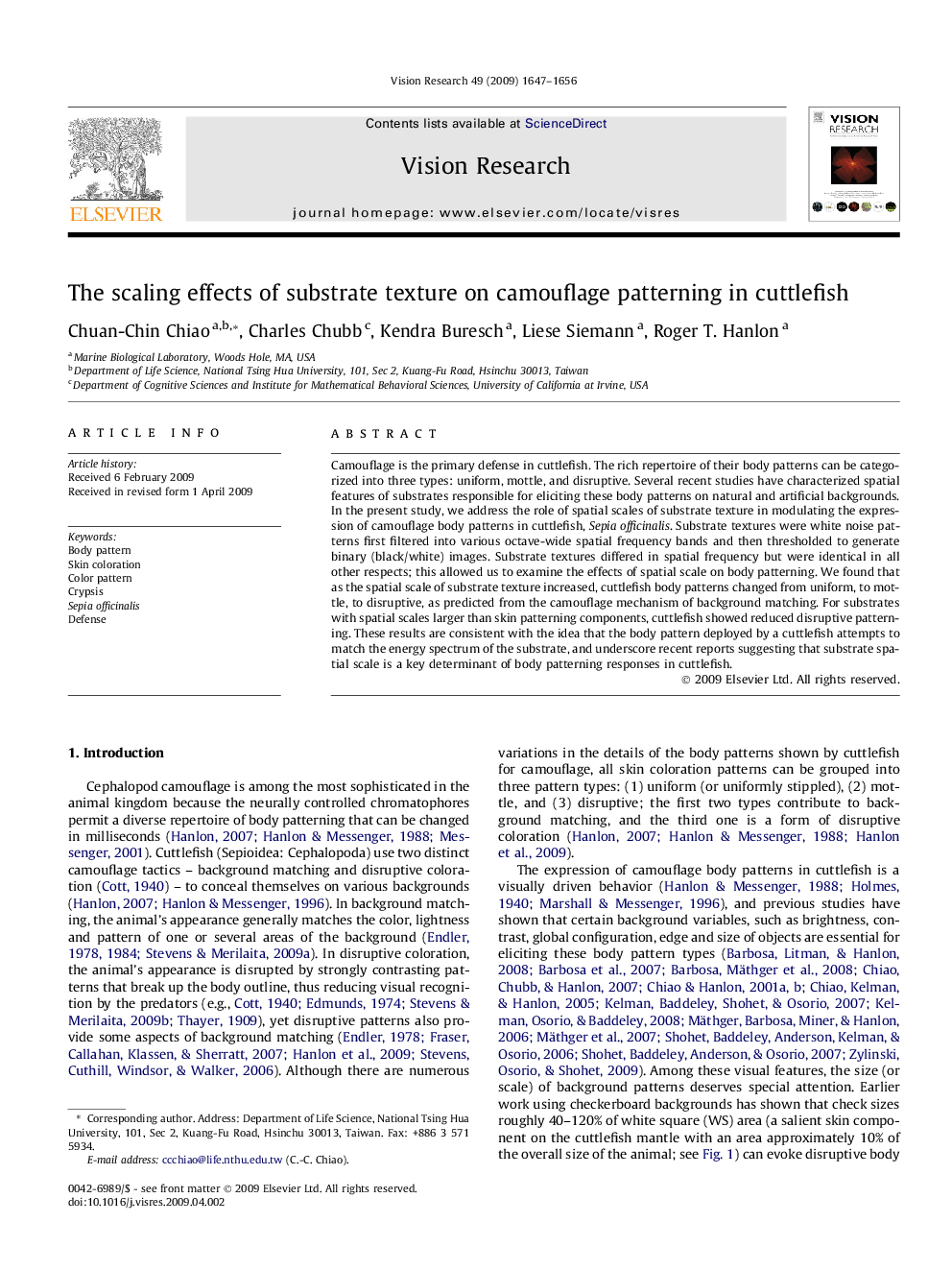| Article ID | Journal | Published Year | Pages | File Type |
|---|---|---|---|---|
| 4034718 | Vision Research | 2009 | 10 Pages |
Camouflage is the primary defense in cuttlefish. The rich repertoire of their body patterns can be categorized into three types: uniform, mottle, and disruptive. Several recent studies have characterized spatial features of substrates responsible for eliciting these body patterns on natural and artificial backgrounds. In the present study, we address the role of spatial scales of substrate texture in modulating the expression of camouflage body patterns in cuttlefish, Sepia officinalis. Substrate textures were white noise patterns first filtered into various octave-wide spatial frequency bands and then thresholded to generate binary (black/white) images. Substrate textures differed in spatial frequency but were identical in all other respects; this allowed us to examine the effects of spatial scale on body patterning. We found that as the spatial scale of substrate texture increased, cuttlefish body patterns changed from uniform, to mottle, to disruptive, as predicted from the camouflage mechanism of background matching. For substrates with spatial scales larger than skin patterning components, cuttlefish showed reduced disruptive patterning. These results are consistent with the idea that the body pattern deployed by a cuttlefish attempts to match the energy spectrum of the substrate, and underscore recent reports suggesting that substrate spatial scale is a key determinant of body patterning responses in cuttlefish.
